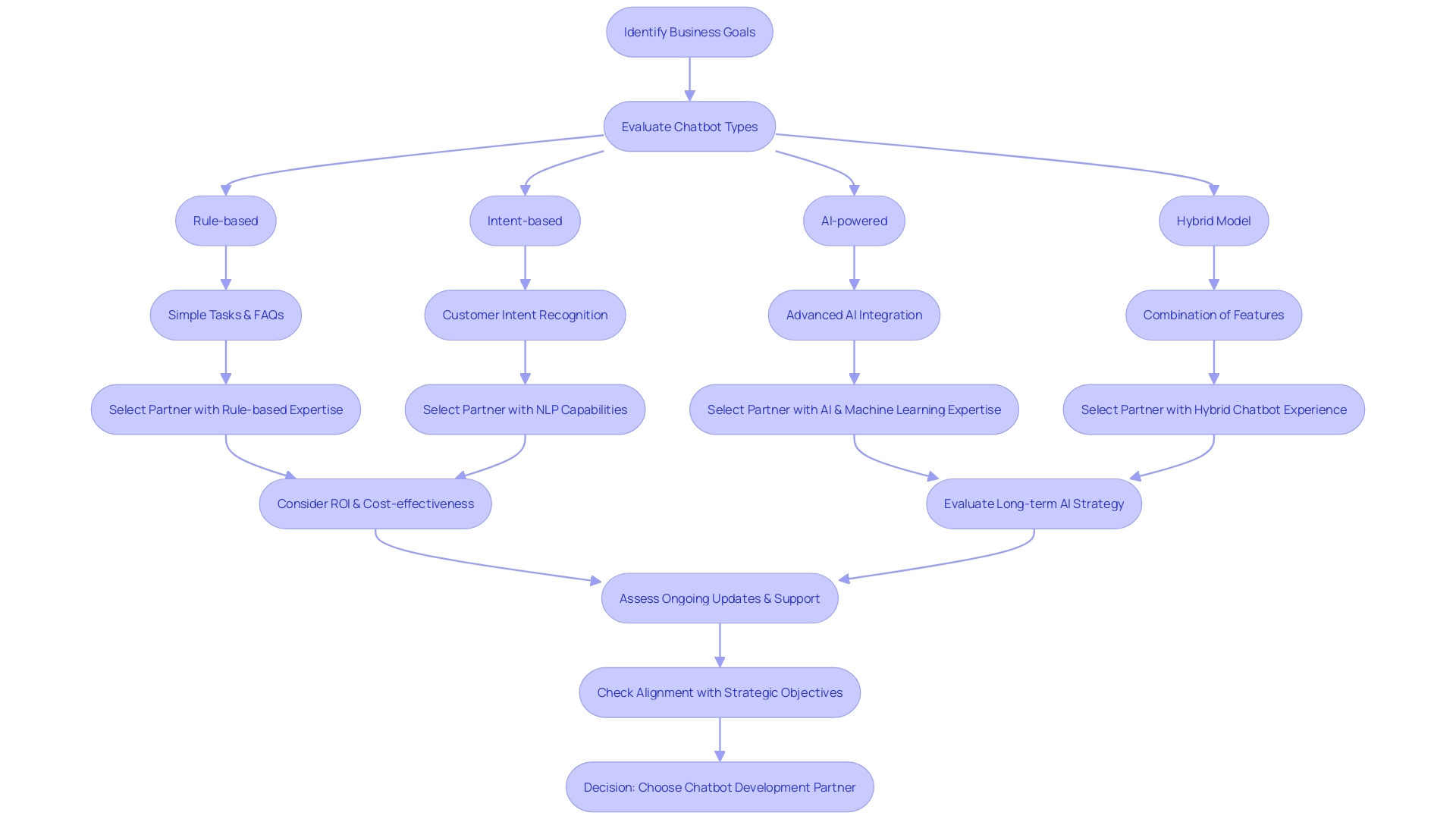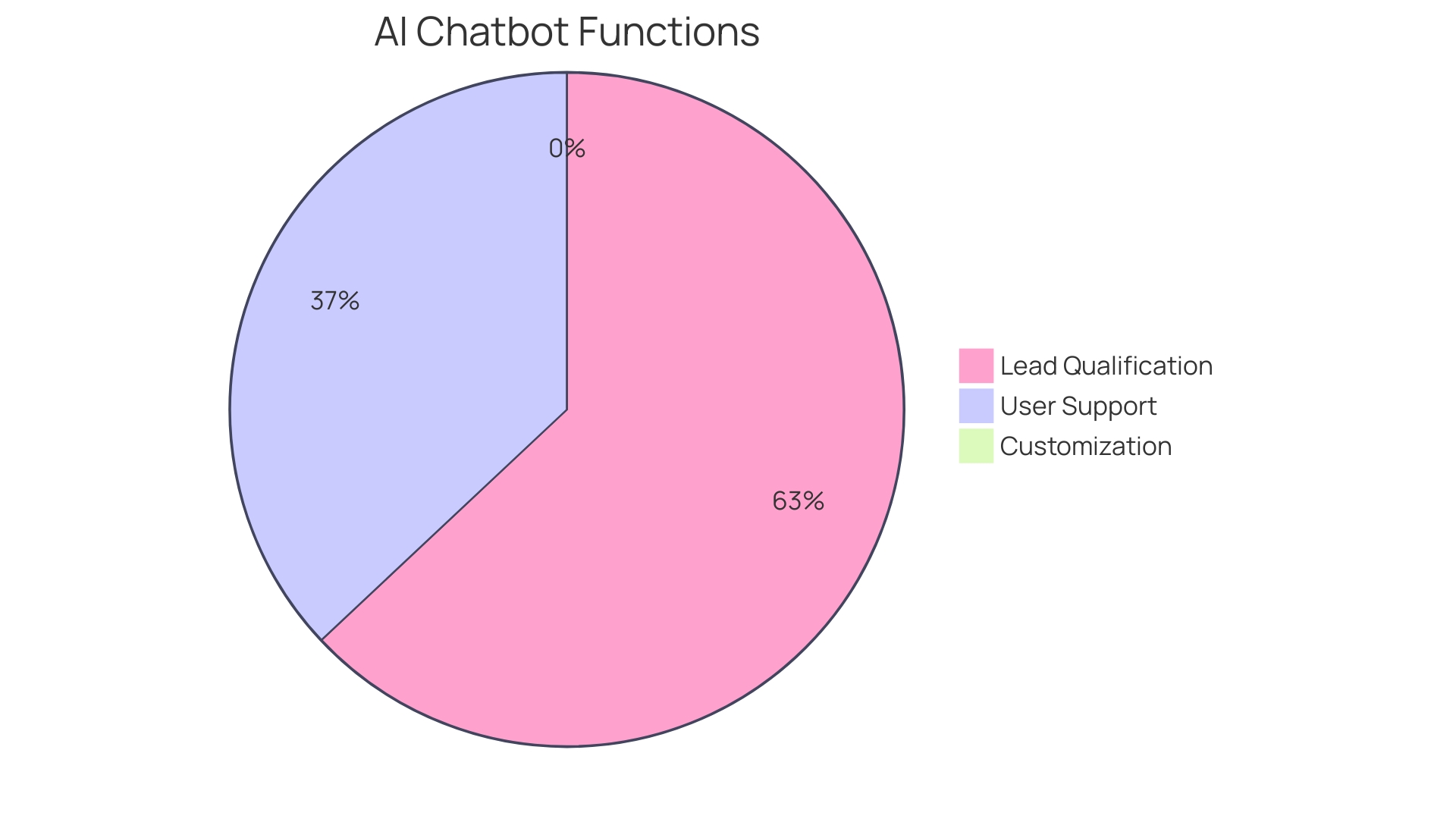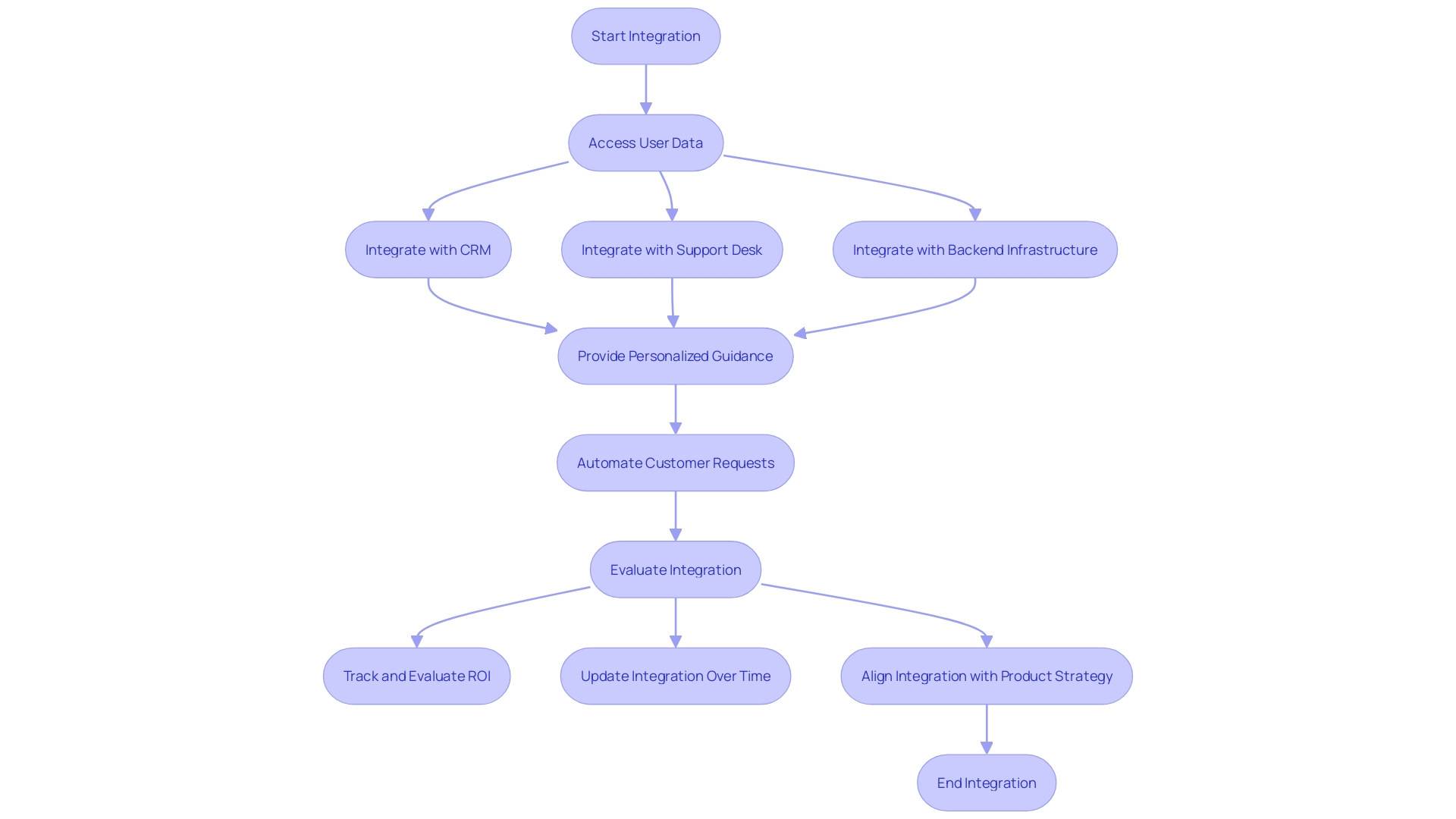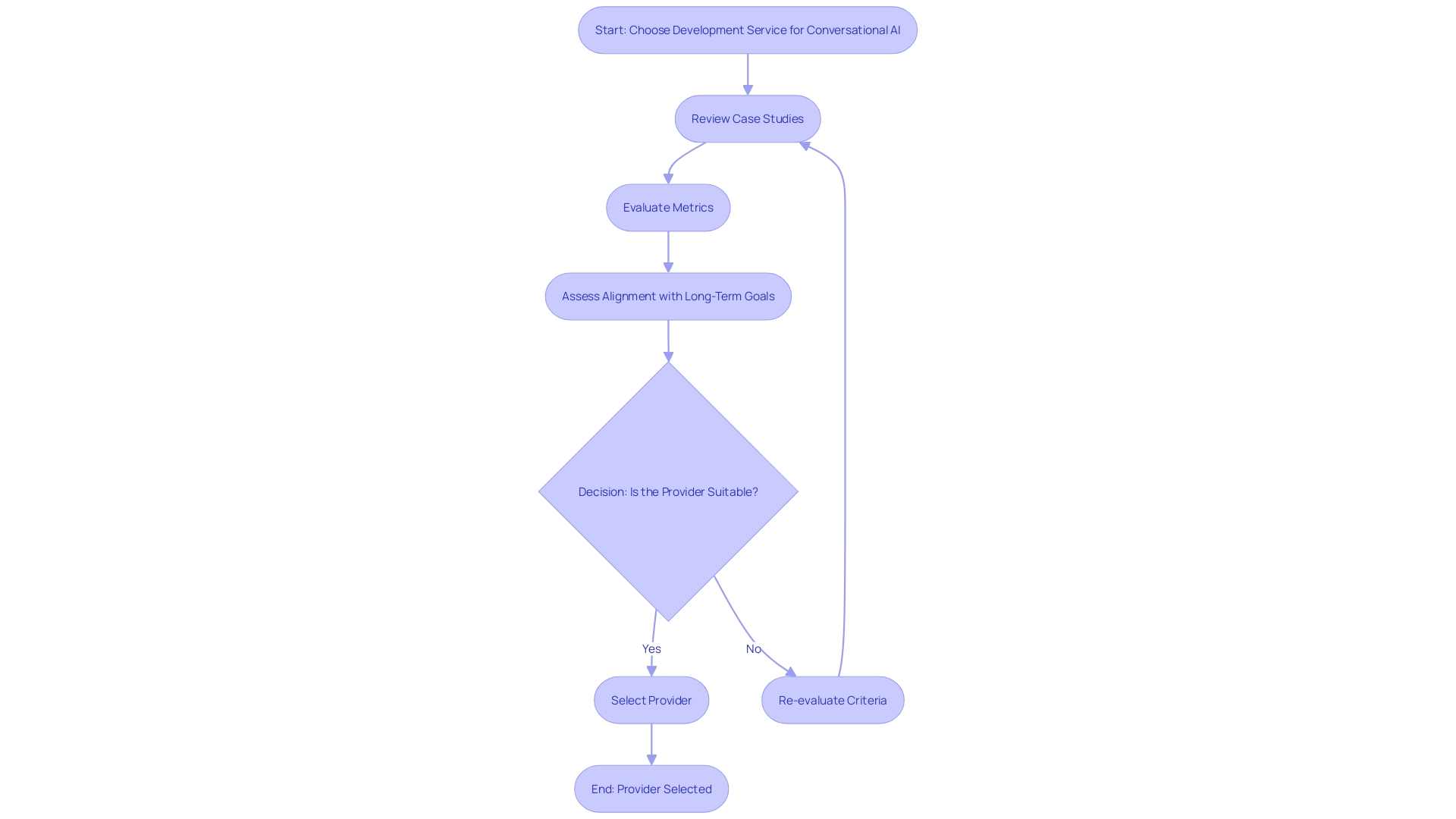Introduction
Embarking on the integration of a chatbot into your business requires careful planning and analysis of your customer base and their challenges. By taking a strategic approach and leveraging AI, you can streamline tasks, enhance user engagement, and drive operational efficiency. In this article, we will explore key factors to consider when choosing a chatbot development company, evaluating chatbot development platforms, assessing integration capabilities, ensuring scalability and customization, understanding cost considerations, and learning from successful chatbot implementations.
By understanding these aspects, you can make an informed decision and develop a chatbot that exceeds user expectations and contributes to your company’s success.
Understanding Your Business Needs
Starting the incorporation of an AI assistant into your enterprise starts with a thorough examination of your client base, identifying their difficulties, and determining the operations you want to simplify or enhance with artificial intelligence. By adopting this strategic approach, you’re laying the foundation for an automated conversational agent that not only fulfills your goals but also allows for expansion and creativity. Similar to Uber leveraging AI to fine-tune interactions in real-time, the implementation of a conversational interface should aim to enhance engagement and satisfaction.
To ensure a seamless integration, start with a plan that resonates with your specific needs. Customizing the Ai’s learning by providing it with top-notch datasets, like website content and customer dialogue, can greatly enhance the response accuracy of the conversational agent. Embrace the iterative process of AI development: early versions may not be perfect, but through user acceptance testing and continuous feedback, the AI will evolve, much like a child learning from conversation.
The journey of AI integration is one of incremental innovation. By quickly deploying an initial version and allowing your team to test its efficacy, you can build upon a solid foundation, introducing new and unforeseen functionalities that could give your company a competitive edge. As you weave this technology into your operations, it’s crucial to consider the long-term ROI, the alignment with your product strategy, and the maintenance processes that will ensure the chatbot’s relevance and effectiveness over time.
With AI-powered chatbots, the opportunity to automate onboarding, provide instant support, and collect valuable insights is immense. Recent studies have shown that, besides lead generation, chatbots can provide immediate support, with many companies strategically placing them on main and pricing pages to address FAQs and enhance the experience of individuals.
To summarize, careful strategizing, accurate information input, and a willingness to continually improve are the essential elements in creating a conversational AI system that not only fulfills but surpasses the expectations of individuals, consequently enhancing operational effectiveness and customer contentment.

Types of Chatbots: Rule-Based, Intent-Based, AI-Powered, and Hybrid Models
Selecting a chatbot development partner necessitates an understanding of the diverse range of chatbots they can build. Rule-based chatbots follow predefined responses, while intent-based chatbots interpret user intents to provide answers. AI-powered chatbots utilize machine learning to continuously improve interactions. Hybrid models combine these approaches for a more tailored experience. The right partner should match your business goals, whether it’s improving customer support, like FlowSavvy’s experience with rapid query resolution, or enabling a company like ProspectSoft to enhance their reporting capabilities. As the digital landscape evolves, with companies like OPPO integrating AI across their phone lines, the importance of aligning artificial intelligence functionality with your strategic objectives grows. Considerations for ROI, long-term AI integration, and ongoing updates are essential. With Gartner’s forecast of more than 50% of organizations implementing conversational AI agents, and the investment in AI agent creation surpassing conventional application creation, the emphasis on efficient AI agent solutions is evident. Your choice should not only solve immediate user problems but also contribute to a seamless customer journey, leveraging automation to achieve significant operational outcomes.

Key Factors to Consider When Choosing a Chatbot Development Company
Choosing a company that specializes in building conversational AI solutions, which aligns with your operational goals, is a crucial decision. Seek out a team with a demonstrated history in AI development and a talent for comprehending and resolving distinct business requirements. The company should provide strong integration capabilities, ensuring that the conversational AI system works seamlessly with existing systems, much like the approach seen in healthcare where digital service teams assess technology for compliance and alignment with current solutions. It’s important to select a partner dedicated to providing a user-friendly and efficient conversational AI experience, as well as continuous support to adjust to evolving user interactions.
Opt for a company that follows a clear, agile development methodology, with transparent pricing structures, and emphasizes quality assurance. They should have a dedicated team that employs both manual and automated testing to ensure the AI assistant operates without hitches. Security is paramount; the company must have stringent data protection policies, employing the latest encryption technologies to safeguard sensitive information. By taking into account these factors, you can establish the foundation for an automated conversational system that not only improves interaction but also adds to operational effectiveness and a favorable return on investment.
Evaluating Chatbot Development Platforms: Ease of Use, Features, and Channels Supported
Selecting the right chatbot development company involves more than just looking at their portfolio; it’s about the technology and platforms they utilize. Ideal platforms are not only user-friendly but also rich in features, supporting a multitude of channels including websites, mobile applications, and various messaging platforms. Scalability and customization are critical as well, allowing for the growth and evolution of business needs over time.
-
LLMChat stands out as a premier all-in-one AI chat interface, distinguished by its intuitive design. Without the need for extensive tutorials, users can navigate its clean interface and access powerful features effortlessly.
-
AI chatbots are not just a trend but a strategic investment, with an impressive capacity to act as sophisticated “co-pilots” for both personal and professional tasks. By 2027, chatbots are expected to become the main service channel for one in four businesses, emphasizing their growing significance (Gartner).
-
The integration of AI into chatbot platforms is proving to be a boon for efficiency. Chatbots are the leaders in lead qualification, gathering vital information from individuals which can then be used to customize the most appropriate offerings. They’re especially effective on main and pricing pages, addressing FAQs and aiding in lead collection.
Statistics indicate that 37% of chatbots also offer user support, highlighting their dual function in both lead generation and client service. The swift response times and elimination of repetitive inquiries not only enhance customer experience but also relieve the customer service team, enabling them to focus on more complex issues.
- When evaluating the long-term ROI of AI integration, one must consider strategic alignment with the product strategy, the processes required for ongoing maintenance and updates, and the opportunity costs involved.

Assessing Integration Capabilities: CRM, Support Desk, and Backend Systems
Choosing a development service for conversational AI involves more than just considering its ability to engage in conversation. Integration with existing systems, such as CRMs, support desks, and backend infrastructures, is vital for creating a cohesive user experience. A chatbot’s capability is enhanced when it can access a wealth of user data, enabling it to provide personalized guidance and expedite support tasks. Consider the success of Open Dialog Ai’s Insurance AI Co-Pilot, which demonstrates how seamlessly integrated AI can enhance interactions without requiring an overhaul of current systems. Moreover, with generative AI techniques, the transition from imperative actions to a more natural, declarative experience is becoming a reality, simplifying complex tasks like querying CRM databases, as seen in the case of a large enterprise client who benefited from a chat-like interface for data access. The integration of AI can automate up to 70% of customer requests, with over half of retail companies already leveraging this technology to boost customer service. Therefore, when assessing potential developers of conversational agents, it’s crucial to verify that they can provide a solution that corresponds to your operational environment and effectively employs generative artificial intelligence and natural language processing to offer an instinctive, productive service to your customers.

Scalability and Customization: Future-Proofing Your Chatbot Solution
As the demand for enhanced interaction grows, organizations are recognizing the importance of developing AI chatbots that are not only scalable but also highly customizable. With a focus on the financial services industry, where the influx of data from market trends to regulatory updates is relentless, an AI-powered virtual assistant can serve as a Knowledge Assistant, streamlining the flow of information. Such an AI conversational agent, particularly one constructed on powerful platforms like AWS, exemplifies how scalability and adaptability are crucial for any solution to effectively handle growing demands and business evolution.
The foresight to select a company specializing in creating scalable solutions with a proven track record is crucial. These solutions must not only manage the volume of interactions but also deliver precise, relevant responses, ensuring financial professionals can access the right information at the right moment, thus avoiding delays and inaccuracies. Furthermore, customization features are integral, allowing the chatbot to be finely tuned to the unique operational needs and user expectations, providing a seamless experience that resonates with both the brand and its clientele.
With statistics indicating a significant pivot towards bots, where over 50% of medium to large enterprises have already integrated chatbots, surpassing traditional mobile app development, the trend is clear. The adoption of AI chatbots is a strategic move that aligns with the digital transformation agenda, driving operational efficiency and enhancing client engagement. The emergence of Large Language Models (LLMs) like ChatGPT and GPT-4 has further propelled the capabilities of conversational AI, despite the concerns over the environmental impact and cost-effectiveness of these technologies.
In conclusion, the integration of AI chatbots into customer communications and internal knowledge management systems is a testament to the value they bring. They are a pivotal tool for the modern enterprise, not only in terms of automation and efficiency but also as a strategic asset that can adapt and scale with the business, ensuring long-term relevance and competitive edge.
Cost Considerations: Total Cost of Ownership and Ongoing Maintenance
Choosing a partner for building a conversational AI requires a thorough understanding of the expenses involved. This goes beyond just the initial outlay for development; it encompasses the total cost of ownership, which includes licensing, hosting, and ongoing support and maintenance. It’s crucial to not only compare the pricing models of various providers but to also delve into the specifics of their fee structures. For an accurate cost assessment, consider the frequency of end-user engagement with the conversational AI system and determine the most suitable unit of measure for your cost analysis, such as the cost per conversation. Recent developments in AI, like GPT-4 Turbo, have shown cost reductions, indicating a trend towards more affordable AI solutions. However, a meticulous evaluation of direct and potential ancillary expenses remains paramount. As the industry advances, with upgrades like GPT-4 Turbo’s improved abilities and cost-effectiveness, it’s crucial to stay updated about the most recent advancements that could impact the economics of your conversational AI project.

Case Studies: Successful Chatbot Implementations and Lessons Learned
Choosing the appropriate development service for conversational AI can be crucial for improving user interactions in different sectors. To make an informed decision, scrutinize the case studies of potential providers. These documents are a treasure trove of insights, revealing a company’s technical acumen, strategic approach, and the tangible benefits they delivered to clients. For instance, a healthcare organization could deploy an AI conversational agent to optimize operations and address staffing gaps, directly influencing patient care. Similarly, a travel company like Holiday Extras utilized AI to overcome language barriers and promote data fluency among employees, showcasing the versatility of conversational AI applications.
When reviewing case studies, pay attention to the specific challenges that were addressed and how the automated messaging system contributed to overcoming them. Evaluate the metrics employed to measure the impact of the automated conversational agent on operational effectiveness and client contentment. For instance, the adoption of chatbots in retail has led to the automation of up to 70% of customer requests, indicating a significant enhancement in user interaction and service quality.
Additionally, pay attention to any current digital solutions within a company that may coincide with the suggested automated messaging system. This due diligence ensures that resources are efficiently allocated and that the AI assistant delivers novel capabilities rather than duplicating existing tools.
Ultimately, a successful chatbot development company will not only provide a robust technological solution but also offer strategic insights that align with your long-term digital transformation goals. By examining their case studies with a critical eye, you can ascertain whether they have the expertise to tailor their services to your unique industry challenges and user interaction needs.

Conclusion
In conclusion, integrating a chatbot into your business requires careful planning and analysis. By leveraging AI and taking a strategic approach, you can streamline tasks, enhance user engagement, and drive operational efficiency. When choosing a chatbot development company, consider their track record, robust integration capabilities, user-friendly experiences, and ongoing support.
Evaluate chatbot development platforms based on ease of use, features, and scalability. Assess integration capabilities to ensure seamless integration with existing systems. Scalability and customization are essential for future-proofing your chatbot solution.
Consider the total cost of ownership and ongoing maintenance. Review case studies of successful chatbot implementations to gain insights into a company’s expertise. By considering these factors and making an informed decision, you can develop a chatbot that enhances user interactions, drives operational efficiency, and contributes to your company’s success.

